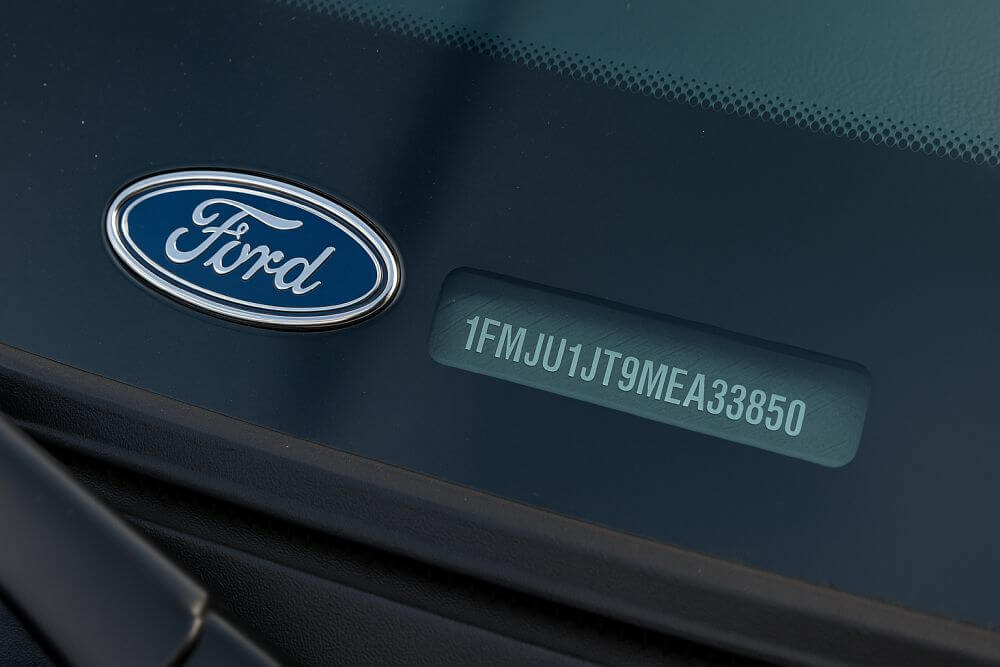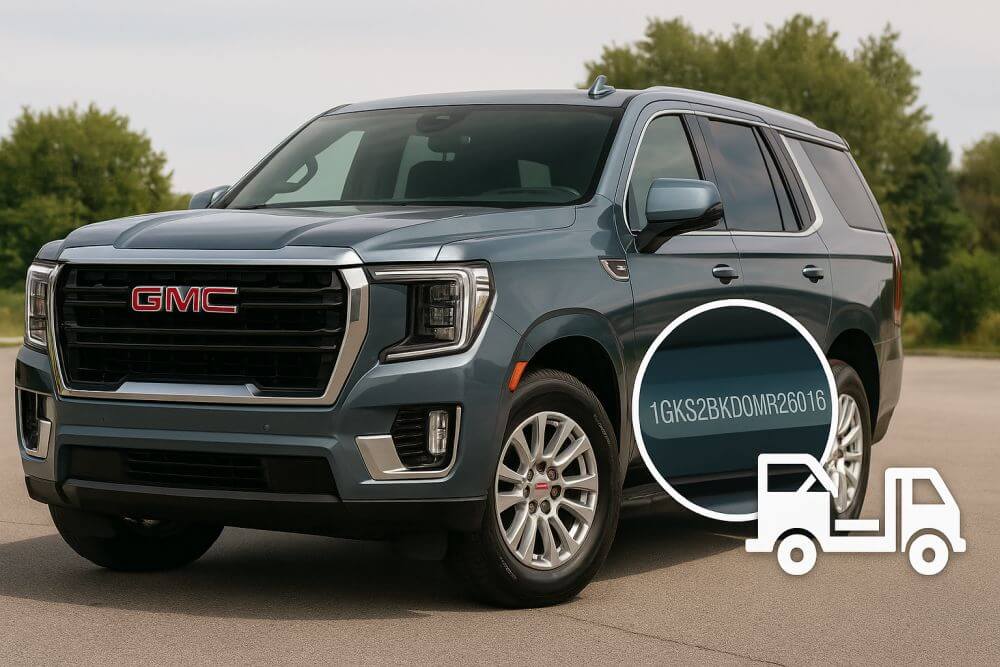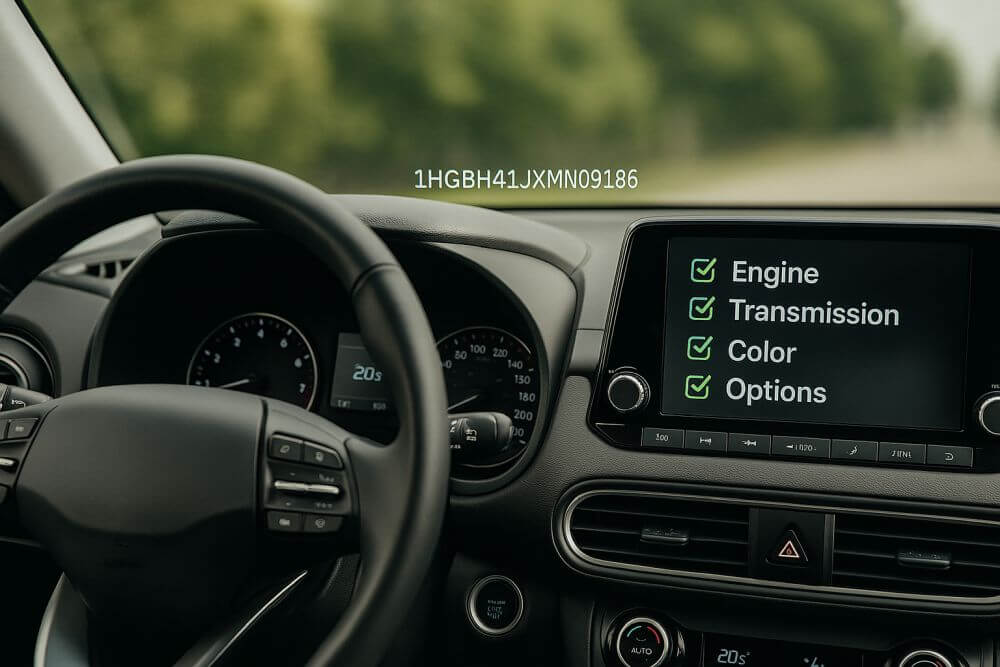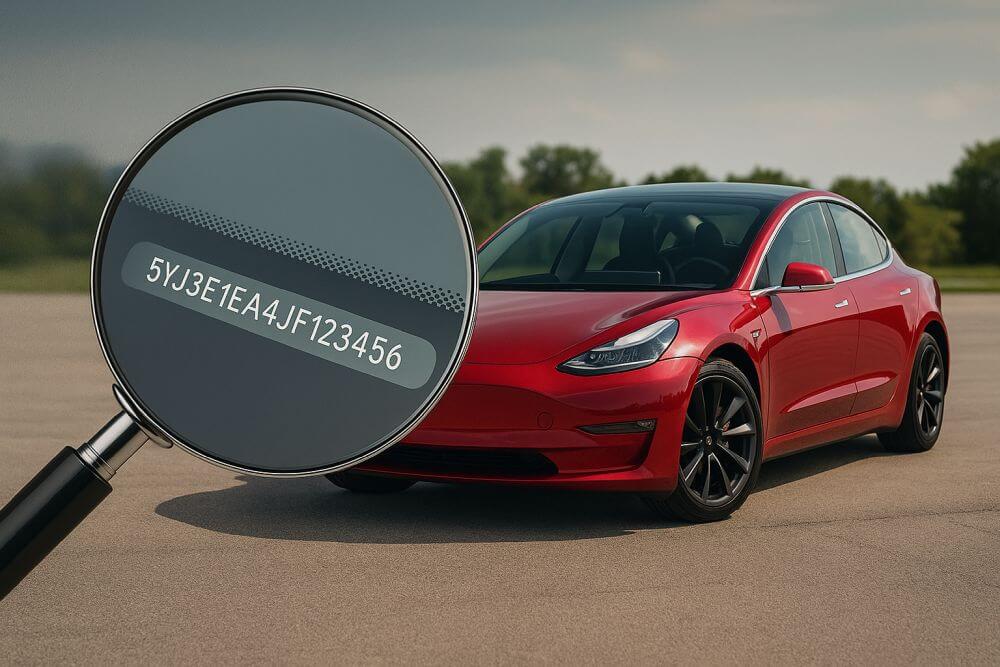When it comes to Ford vehicles—especially trucks and SUVs—what you see isn’t always what you get. Two Ford F-150s or Explorers might look identical on the outside, but their engines, towing capabilities, trim levels, and tech packages could be very different under the surface.
So how do you know what you’re really buying or driving?

The answer lies in the Vehicle Identification Number (VIN)—a 17-character code that holds the key to your vehicle’s original factory build. When decoded correctly, your Ford’s VIN reveals not only the engine and trim level, but also optional tow packages, infotainment systems, and advanced driver assistance features installed at the time of manufacture.
In this post, we’ll walk you through how to decode a Ford VIN and how to use it to uncover hidden build specs—without going to the dealership or digging through old paperwork.
What Is a Ford VIN?
A Vehicle Identification Number (VIN) is a unique code assigned to every vehicle at the factory. It’s like a vehicle’s fingerprint—no two VINs are the same, and each one encodes key information about the vehicle’s:
- Country of origin
- Manufacturer and division
- Body style and vehicle type
- Engine and transmission
- Model year
- Assembly plant
- Trim level and installed options
- Towing capacity and axle ratio (on trucks)
Ford began using the 17-digit standard format in 1981, and every character in the VIN has a defined purpose. The VIN can be found in several places, including:
- Driver’s side dashboard (visible through the windshield)
- Inside the driver’s side door jamb
- On the title and registration
- On insurance documents or the owner’s manual
Ford VIN Structure: 17 Characters That Reveal It All
Let’s break down a sample VIN:
Example: 1FTFW1E57NFB12345
| Section | Digits | What It Reveals |
|---|---|---|
| 1–3 (WMI) | 1FT | Manufacturer and division (1 = U.S., F = Ford, T = Truck) |
| 4–8 (VDS) | FW1E5 | Vehicle line, engine, restraint system, cab style, GVWR |
| 9 (Check Digit) | 7 | Validates VIN accuracy using a checksum |
| 10 (Model Year) | N | 2022 |
| 11 (Assembly Plant) | F | Dearborn Truck Plant |
| 12–17 (Serial Number) | B12345 | Unique build sequence |
This combination can tell you if you’re looking at an F-150 XLT 4×4 with a 3.5L EcoBoost engine, Max Tow Package, and advanced safety tech—even if it isn’t listed in the ad.
Why Decoding Your Ford VIN Matters
Whether you’re buying used or already own a Ford truck or SUV, decoding the VIN gives you insights that even sales brochures may not reveal:
- Confirms engine, drivetrain, and cab style
- Reveals factory-installed towing packages
- Identifies which tech features are included (SYNC, Ford Co-Pilot360, etc.)
- Verifies trim level accuracy
- Highlights potential for resale value or upgrades
This is especially useful for Ford F-Series trucks, Expedition, Explorer, Bronco, Escape, Edge, and Super Duty models.
Use Our Free Ford VIN Decoder to Reveal Your Truck or SUV’s Exact Factory Build
Instead of manually interpreting each digit (or guessing from trim badges), use the Free Ford VIN Decoder from VinCheckPro to instantly generate a detailed factory build report.
You’ll learn:
- Engine size and fuel type
- Drivetrain (4×4, AWD, FWD, RWD)
- Transmission type
- Body style and seating capacity
- Trim level and series
- Factory color
- Installed packages and options
- Tow ratings and axle code (on select models)
- Manufacturing plant
📌 Use our Free Ford VIN Decoder to reveal your truck or SUV’s exact factory build
Unlocking Tow Ratings and Axle Ratios
Towing capacity can vary wildly between models that look identical. For example:
- A 2021 F-150 with the 3.3L V6 may tow 5,000–7,700 lbs
- A 2021 F-150 with the 3.5L EcoBoost and Max Trailer Tow Package may tow up to 14,000 lbs
Here’s what affects your Ford’s towing capacity:
| Factor | Where to Find It |
|---|---|
| Engine Type | 8th digit of VIN or VIN decoder |
| Axle Ratio | VIN report or door jamb axle code |
| Towing Package | VIN decoder results or original window sticker |
| Transmission | Typically in VDS (positions 4–8) |
If the vehicle includes the Max Tow Package, you’ll likely see upgrades like:
- Class IV hitch
- Integrated trailer brake controller
- Enhanced engine cooling
- Upgraded rear axle
- Trailer sway control
A Ford VIN decoder can expose whether these features were installed from the factory, ensuring you get what you’re paying for.
Find Hidden Tech Packages (SYNC, Co-Pilot360, etc.)
Not all tech features are visible at a glance. Many used Ford trucks and SUVs are advertised with terms like “fully loaded” or “with tech package,” but the only way to verify it is with the VIN.
Here are some factory-installed systems that can be decoded:
- SYNC 3 / SYNC 4 infotainment systems
- FordPass Connect and Wi-Fi hotspot capability
- Adaptive Cruise Control and Lane Keeping
- Blind Spot Information System (BLIS)
- Remote Start
- Navigation and voice control
- B&O Premium Audio System
Many of these features were optional on mid-level trims like XLT or Limited, so VIN decoding helps confirm what tech was included from the start.
Common Questions Answered by Ford VIN Decoding
Here are a few things our users typically uncover:
➔ Is this really a Lariat or just a dressed-up XLT?
The VIN decoder confirms the true trim level assigned at the factory.
➔ Does this truck have the heavy-duty payload package?
If the VIN decoder includes a 3.73 axle ratio, higher GVWR, or payload prep package, then yes.
➔ Can I tow a travel trailer with this SUV?
Use the VIN report to verify tow package, engine type, and axle configuration before hitting the road.
How Ford VIN Decoding Helps Buyers and Owners
| Use Case | How VIN Decoding Helps |
|---|---|
| Used Vehicle Purchase | Confirms specs match seller’s claims |
| Resale / Trade-in | Verifies high-value packages to increase sale price |
| Parts Ordering | Identifies exact engine and transmission for part compatibility |
| Towing and Hauling | Confirms axle ratio, towing packages, and cooling upgrades |
| Recalls and Warranty | Matches model year and build date for recall eligibility |
What VIN Decoding Doesn’t Show (But VIN History Will)
While a VIN decoder tells you how your Ford was built, it won’t tell you what’s happened to it since.
For that, run a full VIN history report via:
👉 https://www.vincheckpro.com/
A VIN history report shows:
- Accident history and insurance claims
- Salvage or flood titles
- Odometer rollbacks
- Theft records
- Registration and state ownership history
- Open recalls
We recommend running both: a decoder for build specs, and a VIN check for history.
Supported Ford Vehicles
VinCheckPro’s Ford VIN decoder supports:
- F-150 / F-250 / F-350 Super Duty
- Ranger
- Bronco / Bronco Sport
- Escape, Edge, Explorer, Expedition
- Maverick
- E-Series Vans / Transit / Transit Connect
- Mustang / Mustang Mach-E
- Classic Ford models (pre-1981 decoding available separately)
Final Thoughts: Get the Specs. Skip the Guesswork.
Whether you’re shopping used, upgrading, or servicing your Ford, decoding the VIN gives you a trusted source of truth.
Instead of relying on dealer stickers, owner claims, or visual guesses, take two minutes to run your Ford VIN through a reliable decoder and know exactly what’s under the hood, behind the badge, and in your tech stack.
✅ Use our Free Ford VIN Decoder to reveal your truck or SUV’s exact factory build
No sign-up. No cost. Just instant access to your Ford’s true specs—engine, packages, towing, and tech included.


